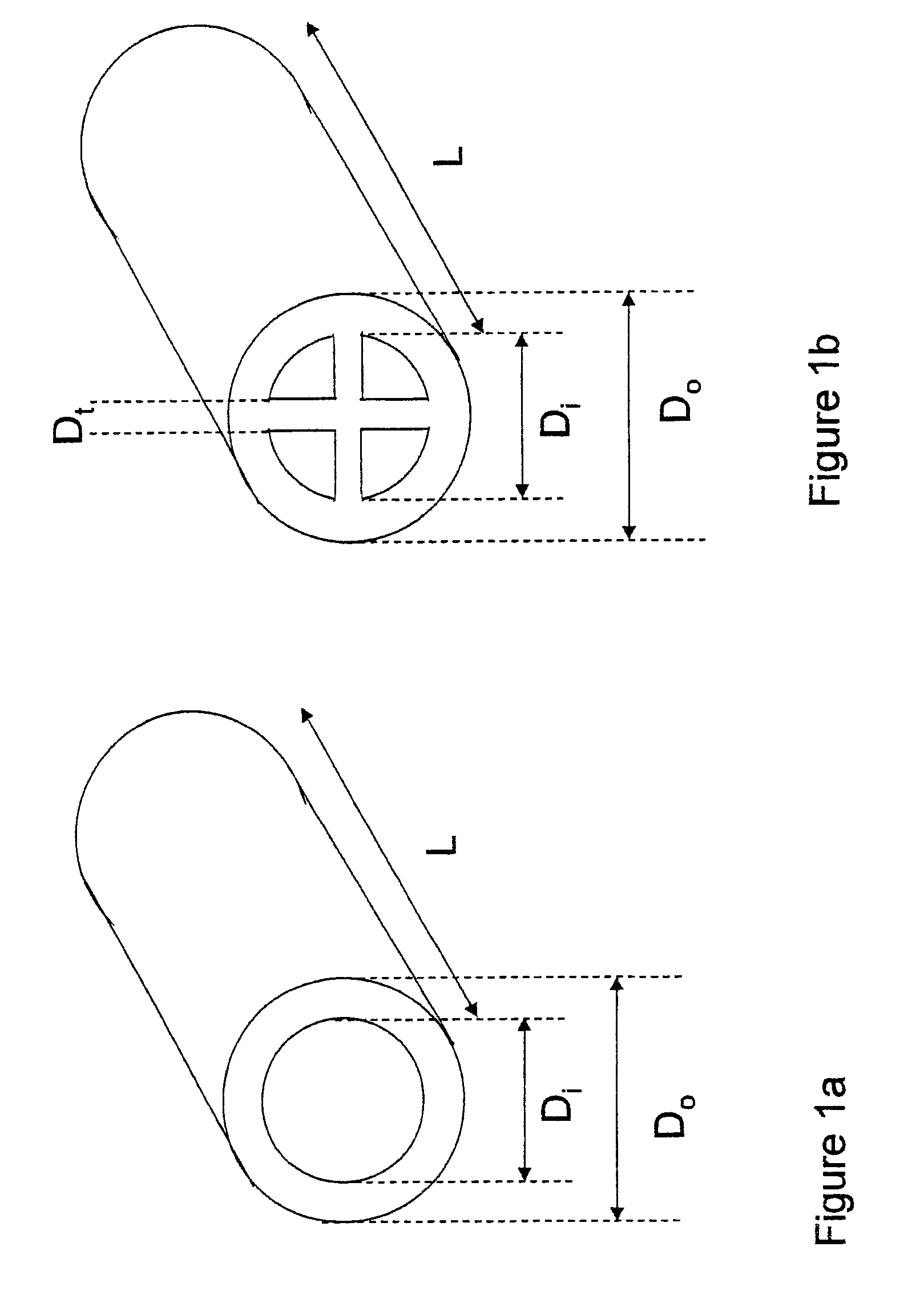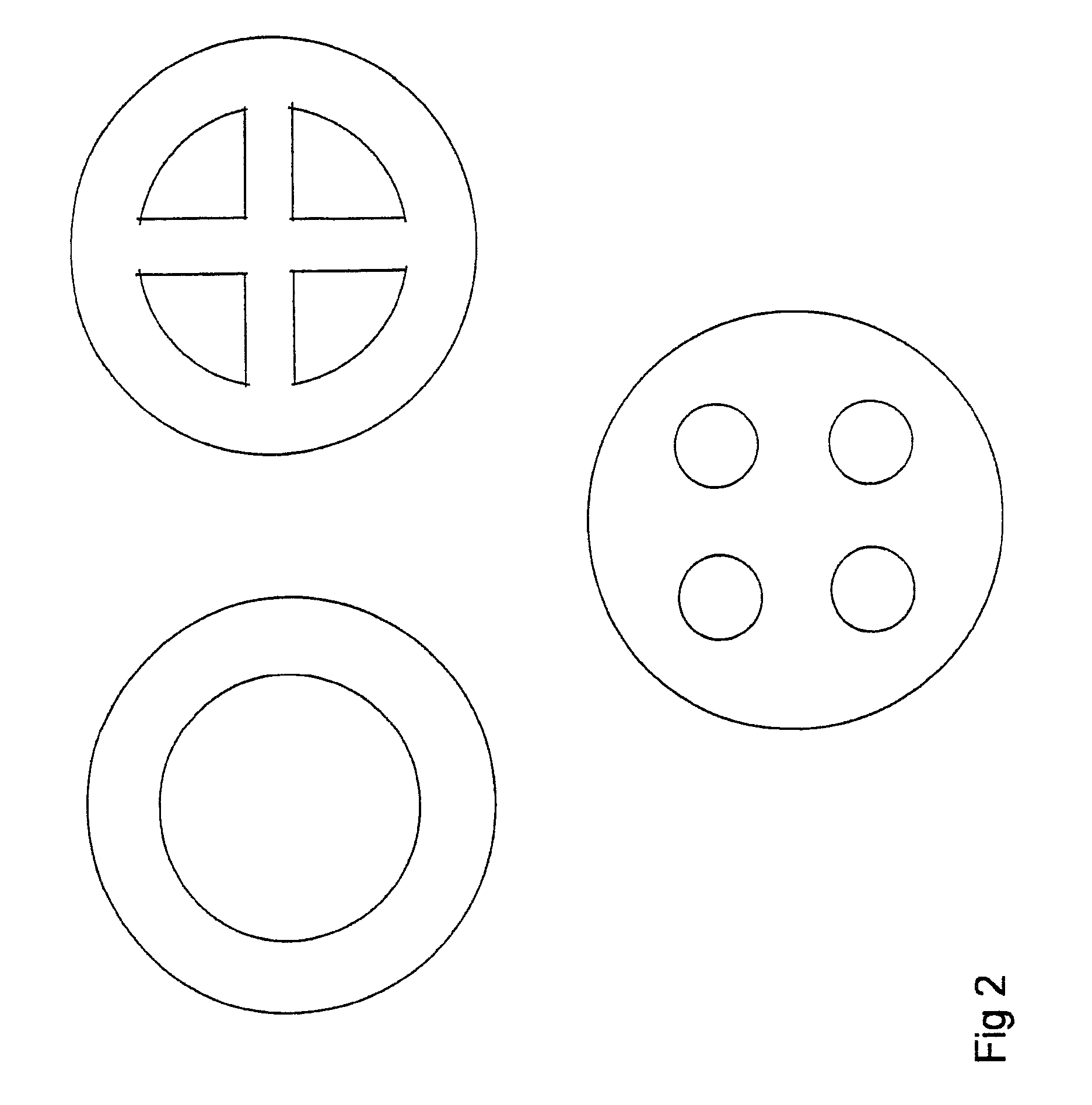Method for enhancing catalyst selectivity
a selectivity and catalyst technology, applied in the direction of physical/chemical process catalysts, liquid chemical processes, gas-gas reaction processes, etc., can solve the problems of low overall pressure drop of the packed bed, achieve high heat transfer rates, reduce the effect of packing bed pressure drop
- Summary
- Abstract
- Description
- Claims
- Application Information
AI Technical Summary
Benefits of technology
Problems solved by technology
Method used
Image
Examples
example 1
[0038]In this example, reaction 3 is the Fischer Tropsch Hydrocarbon Synthesis:
21H2+10COC10H22+10H2O ΔHf=−160 kJ / mol CO (3)
The heat of reaction in equation 3 equates to a product of a product with an average chain length of 10. Here the reaction is conducted in the reactor illustrated in FIG. 4. Hydrogen and carbon monoxide enter the plate heat exchanger where they contact a suitably impregnated catalyst. The catalyst chosen is a hollow cylinder such that the reactants can readily diffuse into the interior of the particle from both sides. This results in a higher activity and with minimal methane and other byproduct formation. The process conditions are chosen such that the average product composition corresponds to a light middle distillate. The large exotherm causes the process gas temperature to increase. This increase causes a temperature differential between the process gas and the heat transfer fluid. This differential causes energy to flow between the two channels. The heat ...
example 2
[0039]In this example, reaction 4 expresses methanol synthesis from syngas.
2H2+CO⇄CH3OH ΔHf=−90 kJ / mol CO (4)
Here the reaction is conducted in the reactor illustrated in FIG. 5. Hydrogen and carbon monoxide enter the plate heat exchanger where they contact a suitably impregnated catalyst. The catalyst chosen is a hollow cylinder such that the reactants can readily diffuse into the interior of the particle from both sides. The arrangement results in higher effectiveness factors and better catalyst utilization than a catalyst with the same external dimensions which is not hollow.
PUM
| Property | Measurement | Unit |
|---|---|---|
| length | aaaaa | aaaaa |
| diffusion length | aaaaa | aaaaa |
| pressure drop | aaaaa | aaaaa |
Abstract
Description
Claims
Application Information
 Login to View More
Login to View More - R&D
- Intellectual Property
- Life Sciences
- Materials
- Tech Scout
- Unparalleled Data Quality
- Higher Quality Content
- 60% Fewer Hallucinations
Browse by: Latest US Patents, China's latest patents, Technical Efficacy Thesaurus, Application Domain, Technology Topic, Popular Technical Reports.
© 2025 PatSnap. All rights reserved.Legal|Privacy policy|Modern Slavery Act Transparency Statement|Sitemap|About US| Contact US: help@patsnap.com



